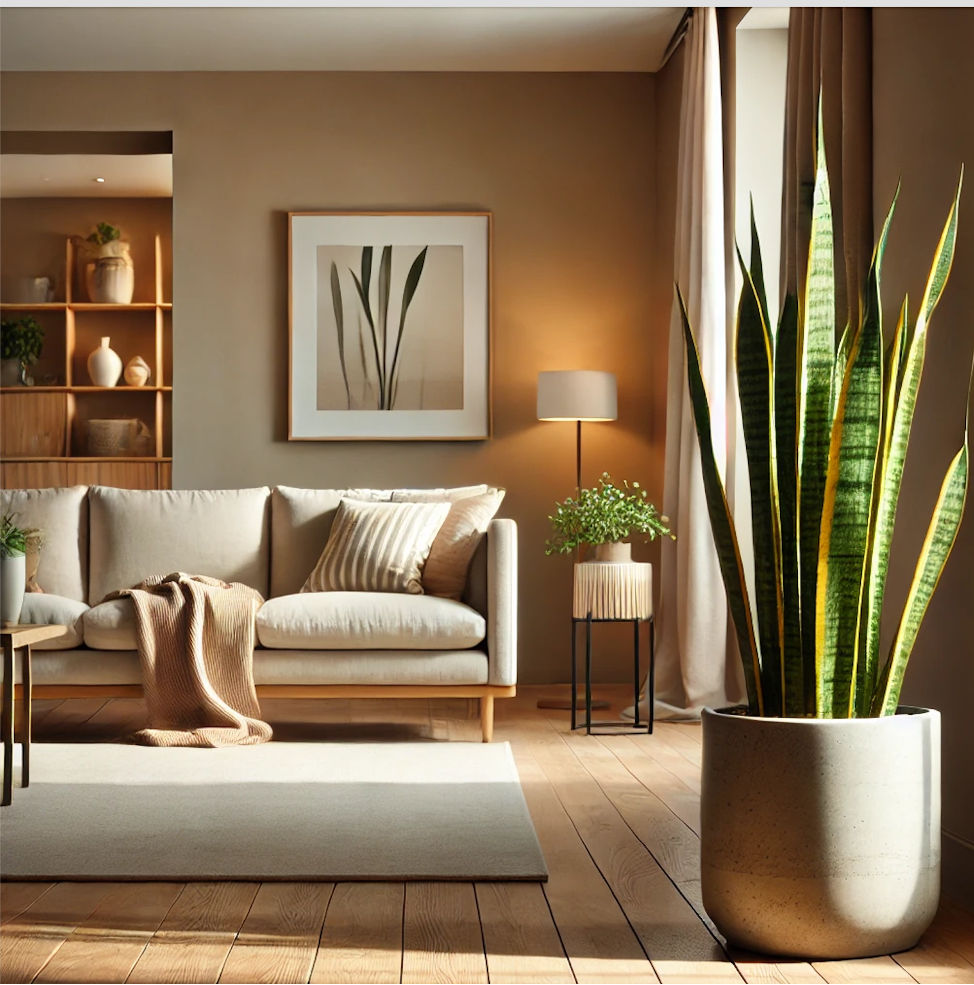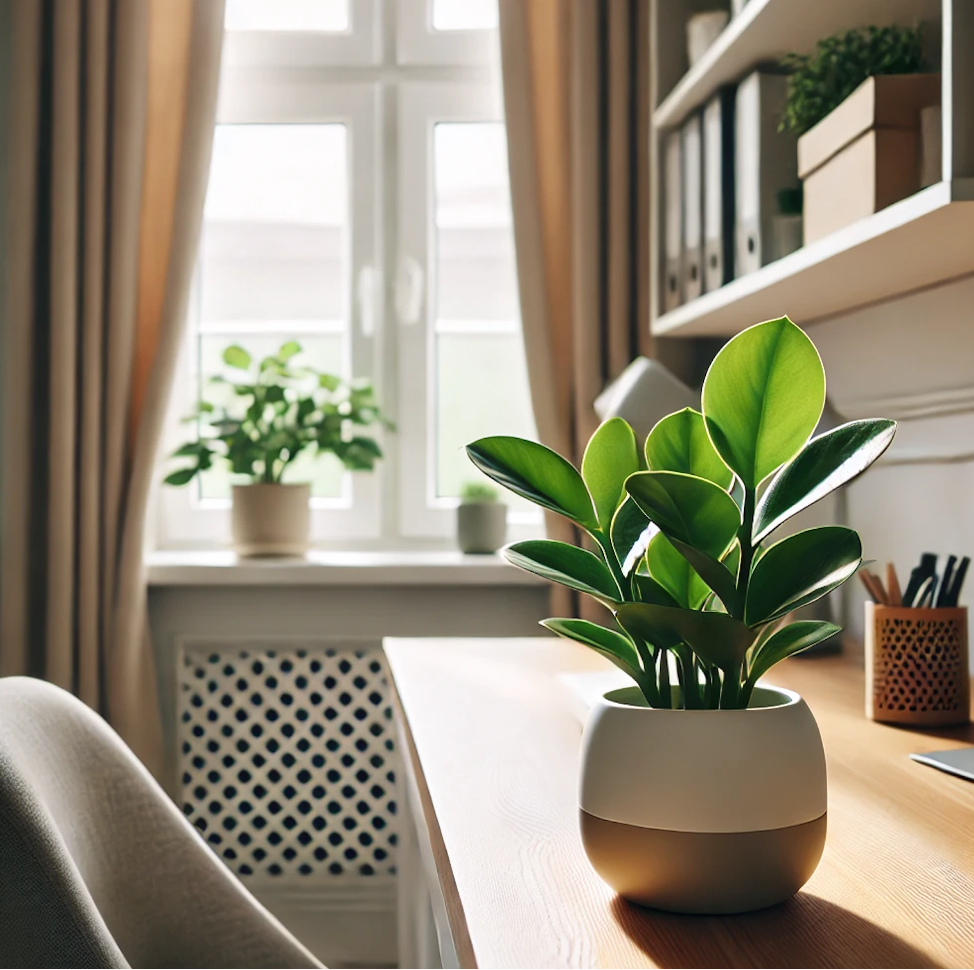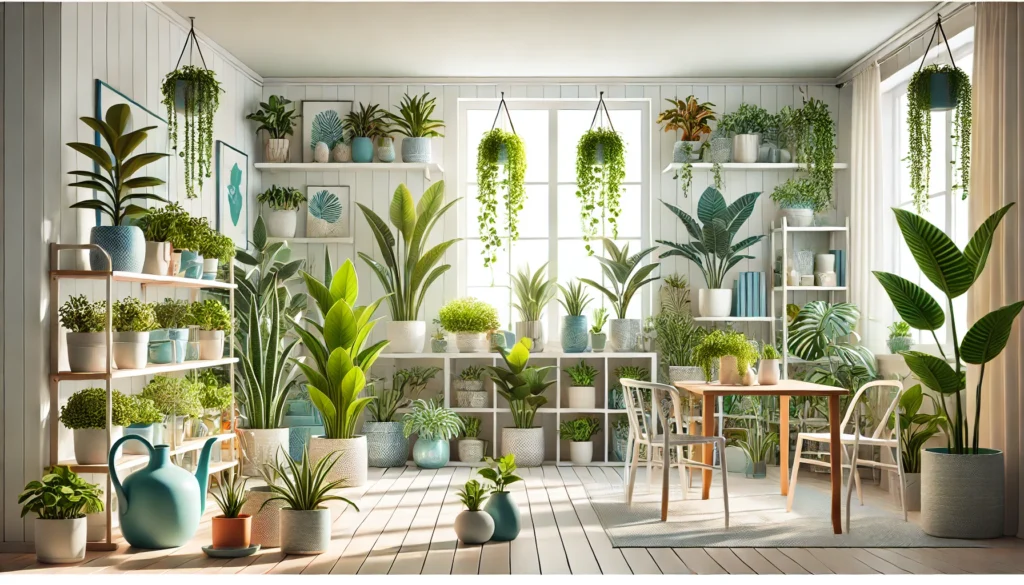Indoor plants provide a wide range of benefits that go beyond their aesthetic appeal. From enhancing mental well-being to purifying the air, these natural elements play a crucial role in improving the quality of life at home or in the workplace. Let’s take a deeper look at how indoor plants can positively impact your wellness.
Mental Health Benefits

Bringing plants indoors can significantly reduce stress and anxiety levels. When you take care of plants, the nurturing process fosters mindfulness and can be a calming ritual. Watering, pruning, and simply observing the growth of your plants can help you feel more grounded and present. This connection with nature helps ease the pressures of modern life, especially when many people spend the majority of their time indoors.
Plants also have the ability to improve your mood. The green foliage and vibrant colors can instantly brighten up any space, creating a sense of tranquility. Research shows that even a small amount of exposure to greenery can lower blood pressure and reduce feelings of depression.
Air Purification
Many indoor plants, such as the snake plant, peace lily, and aloe vera, are known for their ability to purify the air. These plants act as natural filters, removing harmful toxins like formaldehyde, benzene, and carbon monoxide from your living space. Improved air quality not only reduces the risk of respiratory problems but also creates a healthier, more comfortable environment for everyone.
During winter, when windows remain closed and ventilation is limited, indoor plants can help keep the air fresh. Their ability to absorb carbon dioxide and release oxygen makes them an effective, natural way to improve your home’s air quality year-round.
Boosting Productivity

Indoor plants can also enhance productivity and creativity, making them a great addition to any workspace. Research has shown that having plants in your office or home office can increase focus and reduce mental fatigue. The presence of greenery has a calming effect on the brain, which in turn helps with better concentration and problem-solving.
Plants like the ZZ plant or pothos are particularly well-suited for work environments. They thrive in low-light conditions and require minimal care, making them easy to maintain while still providing a visual and mental boost.
Creating a Calming Environment
Certain plants, such as lavender, jasmine, and chamomile, have aromatic properties that help promote relaxation and improve sleep. Their soothing scents have been used for centuries in aromatherapy to relieve stress, anxiety, and insomnia. Incorporating these plants into your bedroom or living space can create a calming atmosphere that supports rest and rejuvenation.
Beyond their fragrances, indoor plants contribute to an overall sense of well-being. Whether placed in a living room, kitchen, or bedroom, they bring an element of nature indoors, helping to balance the energy of the space and creating a more harmonious environment.
How to Choose the Right Indoor Plants

To maximize the wellness benefits of indoor plants, it’s important to choose the right species for your space. Here are a few tips to guide your selection:
- Low-Light Areas: For rooms with little natural light, choose plants like snake plants, ZZ plants, or pothos. These species thrive in low-light conditions and require minimal care.
- Air-Purifying Plants: Peace lilies, spider plants, and aloe vera are great for improving air quality. Place them in frequently used rooms like the living room or bedroom for maximum benefit.
- Aromatic Plants: Lavender, jasmine, and chamomile are ideal for creating a calming space, especially in bedrooms or relaxation areas. Their natural scents help promote better sleep and relaxation.
- Easy-Care Plants: If you’re new to plant care, start with low-maintenance options like succulents, spider plants, or pothos. These plants are resilient and forgiving, making them perfect for beginners.
Caring for Your Indoor Plants
To ensure your plants continue to thrive and provide wellness benefits, proper care is essential. Here are some general tips:
- Watering: Most indoor plants prefer to be watered when the top inch of soil is dry. Avoid overwatering, which can lead to root rot.
- Light: Make sure your plants receive the appropriate amount of light based on their species. While some plants thrive in direct sunlight, others prefer indirect or low light.
- Humidity: During the winter months, indoor air tends to become dry due to heating systems. Misting your plants or placing a humidifier nearby can help maintain the right level of moisture for species that thrive in humid environments.
- Pruning and Cleaning: Regularly prune dead or yellowing leaves to keep your plants healthy and encourage new growth. Wipe the leaves with a damp cloth to remove dust and allow the plant to absorb more light.
Indoor plants are more than just decorative pieces; they have the power to enhance your mental and physical health. By bringing nature into your home, you can create a soothing, healthy environment that supports wellness and productivity. Whether you’re looking to purify the air, reduce stress, or simply beautify your space, indoor plants offer a natural solution that’s easy to incorporate into your daily life.

